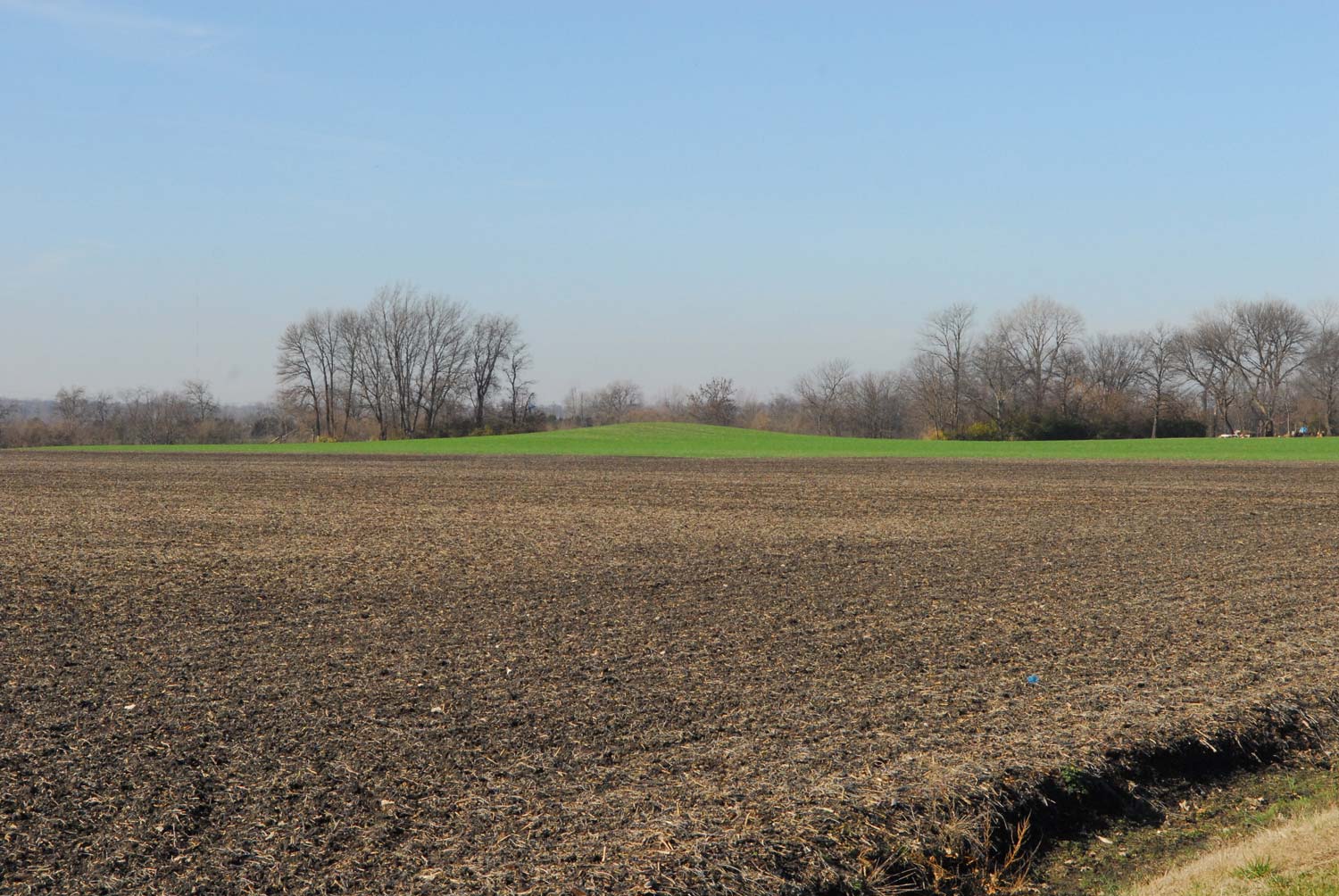

The mounds of the Pulcher Site sit at the north end of Fish Lake—a narrow, long slough that runs for a dozen miles across the length of the bottom. With its backflow from a rising river, the biota of the lake was regularly refreshed with nutrients and biological life. And here, on the eastern edge of the lake and sited on a local high-point known to early settlers as Oklahoma Hill, are a string of remaining mounds. All have been modified by the annual work of agriculture, with the plow regularly working away at their height and redistributing artifacts in the surrounding fields. In certain light, the mounds that make up this site can be read against their agricultural background—with a subtle lift of the ground and its gentle resolution into the furrows.